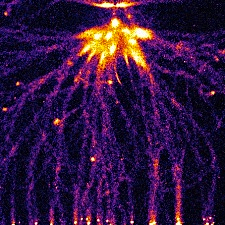Lighting “sprites” are bursts of electricity triggered by lightning discharges, common on Earth, and appear as bright reddish-orange flashes 30 to 55 miles (50 to 90 kilometers) above Earth’s surface.
This phenomenon can provide information about Earth’s atmospheric composition. Researcher Daria Dubrovin and colleagues at Israel’s Tel Aviv University now suspect that sprites also manifest on other planets.
To study “sprites in space,” the team replicated planetary atmospheres like those of Jupiter and Saturn, which experience storms with lightning strikes up to 1,000 times more powerful than here on Earth.
The colors of sprites on a given planet reflect its atmospheric composition and electrical conductivity. Through studying these, the researchers hope to further understand electrical and chemical processes on Jupiter, Saturn, and Venus.
This may help explain why lightning affects technological equipment in space, and could provide clues about the presence of extraterrestrial life, given that lightning can generate organic molecules on Earth.
The researchers sent strong short-voltage pulses into small containers containing the atmospheric make-up of Jupiter, Saturn, and Venus.
“We make sprites-in-a-bottle,” says Dubrovin in a press release.
They produced discharges, known as streamers, that mimicked natural sprites, and photographed them with a fast sensitive camera.
According to Dubrovin, the power of extraterrestrial lightning can be quantified through analyzing the streamers, observing their brightness, color, size, radius and speed.
For this reason, Dubrovin says the Cassini spacecraft, which is currently orbiting Saturn, may benefit in pointing its cameras in a new direction.
A huge lighting storm currently playing out on Saturn produces at least 100 lightning discharges per second. Despite an obscuring layer of cloud lying above this activity, Dubrovin believes that Cassini’s cameras can image sprites at higher altitudes to gather more information about the lightning below.






